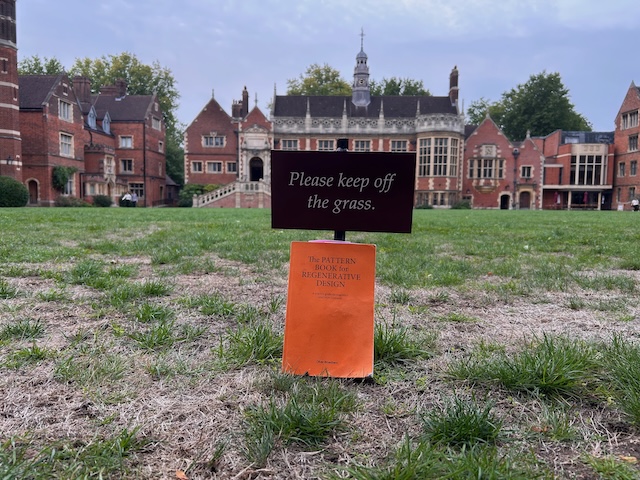This week I took my copy of the Pattern Book to Cambridge. (Its second visit: in July I dropped it — and my laptop — in a puddle. Both recovered, and this time was less eventful.)
I was there to deliver my annual September workshop for the new cohort of students on the Sustainability Leadership for the Built Environment (SLBE) masters at the Cambridge Institute for Sustainability Leadership. Two Pattern Book entries featured strongly.
Continuous place-based design
The workshop was called Design your learning process. We began by asking: what is design? I asked students to sketch a diagram of design as they see it.
This is central to the Constructivist method: start where the learner is, then connect new concepts to what they already know.
After sharing diagrams, I introduced a series of design models, each adding a new dimension, until we reached the Continuous Place-Based Design motif. At each stage, I pointed to overlaps with the students’ diagrams.
The point isn’t to treat any model as a strict procedure, but to use it as something to compare with reality — and then think how we might shift that reality for the better.
Action learning
From there, we turned to the idea that continuous place-based design is really a learning process. Which led naturally to the Action Learning motif.
It’s easy to be passive in learning. The real value comes when we apply theory to practice and then reflect on the results. The Pattern Book entry for action learning even includes a script for running these conversations with colleagues.
This month, I’ve been in workshops on live infrastructure projects where the same theme has surfaced again: organisations struggling to learn from mistakes. Not lessons learned, but lessons lost. For me this underlines that action learning isn’t just a training method — it’s a principle for working in complex systems.
—
It is such a pleasure to teach on this course — this is the start of my eighth cohort! Many graduates are readers here, so if that’s you: thank you for sticking with me all these years.

